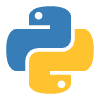Generative AI Solutions for Enterprise and E-commerce
Bringing Generative AI to Life with Robust Infrastructure
Note: Looking to build an AI-powered SaaS MVP? I can help. My ongoing research and hands-on experience in AI application development for my own projects ensure I can give you the best advice for your project.
As a experienced AI Developer and Engineer, I specialize in designing and implementing end-to-end Generative AI solutions. My expertise lies in building scalable, intelligent systems that leverage the full potential of Large Language Models (LLMs) to solve real-world business challenges. I am adept at the entire Gen AI application lifecycle, from foundational data processing and vector embedding to sophisticated agentic workflows and robust infrastructure design.
Core Services
Langchain and Frameworks: Consultation and development of complex, multi-step applications using frameworks like Langchain to orchestrate interactions between LLMs, data sources, and custom tools.
Agentic RAG Systems: Designing and building advanced Retrieval-Augmented Generation (RAG) systems with autonomous agents that can reason, plan, and execute multi-step tasks for deeper, more accurate responses.
Vector Embedding & Databases: Expertise in selecting and implementing state-of-the-art embedding models and managing high-performance vector databases (Pinecone, ChromaDB, Weaviate) for semantic search and retrieval.
LLM Integration with Proprietary Data: Architecting secure and efficient pipelines that enable LLMs to interact with and generate insights from your private, internal datasets without compromising data privacy.
Gen AI Application Infrastructure: Designing scalable, production-ready infrastructure on major cloud platforms (AWS, GCP, Azure) to support the full lifecycle of your Gen AI applications.
Featured Projects
1. Enterprise Knowledge Base Agent
Challenge: A large corporation needed a secure and efficient way for employees to get answers from thousands of internal policy documents, HR guides, and technical manuals. A simple keyword search was insufficient for complex, nuanced queries.
Solution: I designed and implemented an intelligent Agentic RAG system. The pipeline involved:
Data Ingestion: Automatically chunking and embedding proprietary PDF documents using a fine-tuned embedding model.
Vector Database: Storing these embeddings in a self-hosted vector database for fast, semantic retrieval.
Agentic RAG: Using Langchain to create an "Agent" capable of reasoning about a user's query, deciding which specific documents to retrieve, and synthesizing information from multiple sources before generating a final, coherent response.
Deployment: Deployed the solution as a REST API for seamless integration into the company's internal portal.
Technologies Used: Langchain, OpenAI's GPT-4, Custom Embedding Models, ChromaDB, FastAPI, Docker.
2. AI-Powered E-commerce Product Discovery Engine
Challenge: An online retailer struggled with low conversion rates due to a rigid, keyword-based search that failed to understand user intent. They needed a system that could recommend products based on semantic meaning and context.
Solution: I developed a new product discovery engine powered by vector embeddings. The process included:
Semantic Embedding: Each product description was embedded into a high-dimensional vector space using a Sentence Transformer model.
Vector Database: These vectors were stored in a production-grade vector database.
Query-to-Vector: When a user searched, their query was also converted to a vector, and a similarity search was performed in the database to find the most relevant products.
Personalization: The system was extended to create user profiles based on past browsing and purchase history, allowing for personalized, semantically relevant recommendations.
Technologies Used: Sentence Transformers, Pinecone, Python, Flask.
3. Financial Document Analysis Pipeline
Challenge: A financial firm needed to automate the extraction of key financial data points (e.g., revenue, net income, key dates) from quarterly and annual reports, which are often in unstructured PDF formats.
Solution: I architected a comprehensive Gen AI infrastructure to handle the entire workflow. The system was designed to:
Automated Ingestion: Monitor a cloud storage bucket for new financial documents.
Document Processing: Use OCR to extract text from the documents, then chunk the text for efficient processing.
LLM-Powered Extraction: A Langchain Agent was configured with specific tools and prompts to analyze the text chunks, identify the required data points, and extract them into a structured JSON format.
Summarization & Reporting: The extracted data was then used by another LLM to generate a concise summary of the document's key highlights.
Technologies Used: Langchain Agents & Tools, OpenAI's GPT-4, Weaviate, AWS S3, AWS Lambda.
Like this project
Posted Aug 9, 2025
Developed AI solutions for secure document retrieval and product discovery.
Likes
0
Views
14








